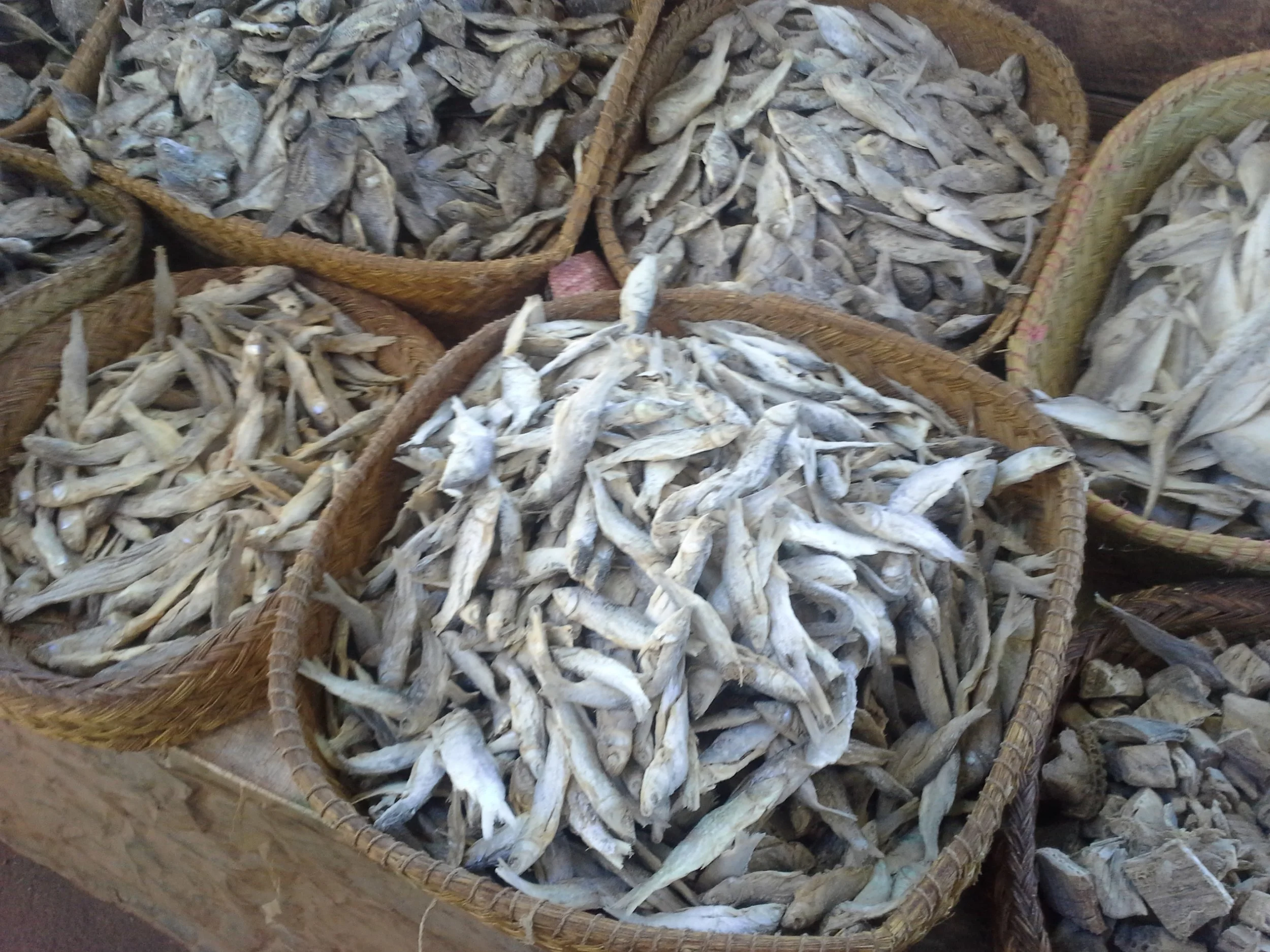On the market in Quartier Isotry, Antananarivo
In Madagascar, where about three quarters of the population live on less than US $2 per day, recycling is not a matter of social responsibility but an economic necessity. The most ingenious examples of recycling are on the markets. Not the upscale markets where middle-class Malagasy, expats and tourists shop, but the regular markets that serve most residents. On a break from our work with UNICEF in December 2015, my colleague Luke Freeman, an anthropologist who has worked in Madagascar for over 20 years, took me to the rambling market in the Quartier Isotry, one of the poorer districts of central Antananarivo.
One stall featured a selection of farming hand tools, with blades of different lengths, widths and angles designed for every task, all forged by blacksmiths from scrap metal. Next door, a Citroën 2CV had donated its organs—its gears—which had been fashioned into hand weights. Bottles and jars are washed and reused. I bought jars of home-made lasary mango hot sauce, a specialty of northwest Madagascar, and sakay, made from red chili peppers with ginger and lemon juice. To carry the jars, a shopping bag made from polyester straps used to secure boxes for shipping. The Malagasy have long learned to recycle and reuse—not through any sense of environmental consciousness but because in a poor country there’s no alternative.
The Isotry bazaar is off the tourist route, and all the more interesting for it. Live geese, ducks, chickens and turkeys are crammed into straw baskets. Scrawny cats, tethered by string to the baskets, are on sale; the point-of-purchase message is that if you buy a cat to keep down the vermin, it will not attack your poultry. There are live crabs in buckets, and stacks of friperie and shoes.
Manioc seller on market
There’s new stuff, of course, including the bizarrely branded Chinese T-shirts and underwear—Tokyo Super Dry, Cool My To Rock, Hugo Premium Fashion Boss. In early December, vendors were hawking artificial Christmas trees and decorations. In the consumer electronics section, it took me a few minutes to figure out why stalls displayed guitars, amplifiers, car batteries and solar panels together. It’s because electricity is still not available in some communities and city districts experience power cuts. The band must play on, so musicians travel with their own power supply.
Dried fish--an important source of protein
In the traditional remedies section, stalls are piled high with sticks of wood and bark, shells, bottles and packets of remedies. One promised to cure almost everything—diseases of the heart, liver, lung and stomach. Others claimed to improve fertility or to build muscles. To ward off evil spirits, there were amulets to wear and incense to burn. Traditional medicine use is obviously not confined to remote rural regions; here in the capital city there were dozens of stalls, most offering the same range of merchandise, and people were buying.



